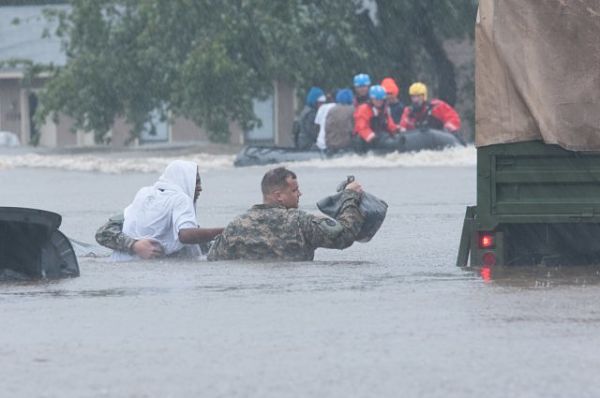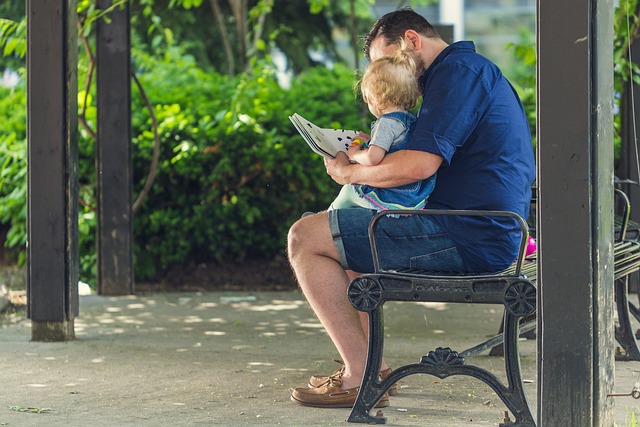Mitigation: The Best Kind of Rainy Day Savings
 Even with earthquakes, wildfires, tornadoes and hurricanes dominating news coverage, floods remain the most destructive American disasters in terms of the impact on lives, livelihoods and cash resources. Recent devastating floods in Houston—and yes, they were precipitated by the awesome rainfall accompanying a hurricane, Harvey—brought that impact into America’s consciousness last month.
Even with earthquakes, wildfires, tornadoes and hurricanes dominating news coverage, floods remain the most destructive American disasters in terms of the impact on lives, livelihoods and cash resources. Recent devastating floods in Houston—and yes, they were precipitated by the awesome rainfall accompanying a hurricane, Harvey—brought that impact into America’s consciousness last month.
Since the days of Lyndon Johnson, 85 percent of presidential disaster declarations have been for floods, with every state having at least one serious flood and 21 states seeing them routinely. The federal government spends about $400 a year per household related to extreme weather—and that doesn’t touch the much greater spending by regional and local governments. And the damages multiply even after the waters recede—according to a Federal Emergency Management Agency study two in five small businesses never reopen after a flood.
What to do?
Mitigate, argues Beverly A. Cigler, a veteran public policy wonk at the University of Pennsylvania, Harrisburg.
In a new paper in the journal State and Local Government Review, Cigler argues that given the unsustainability of meeting the rising costs of flooding from extreme weather events and the proven effectiveness of mitigation to buffer the damage from flooding, mitigation—both structural and social—is absolutely necessary.
As she explained to Social Science Space, “Mitigation enables people and communities to prevent disasters or at least reduce their impacts on the loss of life and property. Anything—education, technical help, financial incentives, etc.—that can be done to promote mitigation behavior can reduce costs and does not create a moral hazard.”
While that is obvious to her, and to city officials ranging from Hoboken to Charleston, it’s not apparent more widely. Her paper notes that “just 4 percent of federal disaster spending is for preparation. Just one in $10 is for mitigation to prevent a disaster in the first place or reduce its impact; nine in $10 is for response.”
Cigler, distinguished professor emerita of public policy, administration and public affairs at Penn State, has long focused her scholarship on the intersection of governments and the issues that arise—or fall between the cracks—as they attempt to mesh. She has written hundreds of articles, served on 15 editorial boards, and written or co-edited nine books. In the year after that disaster, Cigler co-chaired an American Society for Public Administration task force on Hurricane Katrina
This interview focuses on the behavioral half of mitigation. As Cigler says below, “As long as people are human, there will be a need to make points regarding hazard mitigation.”
***
Before we even get started, I have to ask about timing. Although you refer to presidential actions in August, was this paper mostly drafted before the murderer’s row of hurricanes this season, and in particular before Harvey flooded Houston? Or was it written because of Harvey?
The paper was written before Harvey, Irma, and Maria. I submitted final copy page proofs in mid-August, three days after Trump’s executive orders mentioned in the article. I got to add two paragraphs to the text’s final version and the article was in the June 2017 State and Local Government Review, which was published behind schedule during the week that the Houston event occurred.

Beverly Cigler
Did you learn anything new from Houston and the response to its flooding?
Lots of lessons on mitigation. Historically, Houston is the textbook example of a place that has not zoned. In addition, its stormwater system has been the poster child for an ineffective system. Participation rates in the National Flood Insurance Program for residents have been decreasing in recent years.
You ask, however, about lessons regarding response. Houston is not a “fishbowl” like New Orleans, where standing water flooded 80+ percent of the city for six weeks. Houston drained relatively quickly. Still, mold is mold and happens quickly.
After Katrina, Congress passed legislation that required a president to select a FEMA administrator who possesses an emergency management background and gave that position direct access to the president during a disaster. Those changes had a dramatic and positive effect on the response to the Houston disaster. In addition, dozens of laws and process changes were made to nearly every emergency management system after Katrina, resulting in a better response in Houston, compared to past major disasters. Pre-positioning of essential materials—food, water, medicine, etc. —is an example.
In that vein, is this a paper you see as likely to be resurrected routinely (or at least until its prescriptions are widely heeded)?
The National Flood Insurance Program, or NFIP, is up for reauthorization by December 30, an extension from September 30, and that may be extended. As such, I’m writing on that topic, which will incorporate material on flood costs and the value of mitigation. As long as people are human, there will be a need to make points regarding hazard mitigation.
Regardless of the compelling case you make for mitigation, it runs up against seemingly fundamental issues of human behavior – we discount the future against the present. Plus, the better mitigation works the less obvious its value (it never floods here – why do we need to pay for that flood abatement district). How do you address those tensions?
This is a constant struggle. Lots of work is being done on risk perception and ways to deal with human underestimation of risk. Much is being done to promote the Community Rating System that’s discussed in the article. I’m currently working as an academic consultant on a project to write Pennsylvania’s Pre-Disaster Recovery Plan; such plans are required by FEMA and all states are doing them, which requires serious thinking about ways to promote mitigation. If you have a pre-disaster recovery plan in place, all stages of a disaster response should be improved. The best hope for dealing with the natural tensions you mention is to devise incentives to spur mitigation and disincentives for ignoring mitigation.
Often in the wake of disasters there’s an immediate cry of ‘We will rebuild.’ Wouldn’t moving vans be even cheaper than mitigation in many instances?
I’m not sure I understand your point, however, relocating people and buildings is a mitigation strategy that involves “buyouts” of land and property, i.e., moving people and whole neighbors and sometimes towns to an area of less risk. This occurs with repetitive and severe repetitive flood loss areas; it’s becoming very popular during disaster recovery. Saying “we will rebuild” is in many respects just saying, “We don’t have the political will” to do the difficult things that would reduce disaster losses.” With regards to floods, location, location, location is crucial. People love to live near water and view any type of zoning regulation as a “taking” of their land by not allowing the making of as much money as possible in the use of the land. If a local government regulates, it is deemed by the property owner as a “taking” and the community ends up in court. If the community doesn’t take steps to protect public safety, it is negligent in its responsibility to protect life and property.
Currently, the national government is considering less subsidization of flood insurance, which will increase costs to policyholders — and there’s tremendous opposition by those in flood hazard areas. Government is also trying to get private insurance companies involved once again in providing flood insurance. The insurance and reinsurance industries are experiencing significant payouts now and are interested in working with government to reform the existing system for dealing with flood hazards.
Given your focus on responsibility across the board, how do you square the circle of what you called “intergovernmental paradox of emergency management”? Do you see parallels from Puerto Rico and its travails from Hurricane Maria?
Local governments are the least likely to have the resources—financial, managerial, technical, etc.—to undertake mitigation activities, but capacity-building by the states, the national government, and the private sector can help reduce the consequences of the intergovernmental paradox. Mostly, the problem involves “political will” to have and enforce building codes, strong zoning laws, etc. and to use green infrastructure and all the sensible tools contained in the Community Rating System and NFIP guidelines.
Puerto Rico’s problems are exacerbated by its high level of poverty, which greatly influences its ability to withstand and cope with disasters. It is highly likely that the utter devastation there will lead to more resilient strategies in the rebuilding process. For example, the electrical grid, housing construction materials, elevation of structures in the most hazard-prone areas, adjustment of working relations between the intergovernmental sectors, and the legal “authorities” involved in emergency management.
I find it interesting that you include personal and community responsibility in the coda of your paper. Given that we don’t usually hear a lot about the individual, would you talk a little bit about that?
When emergency management is thought of, “first responders”—police, fire, and emergency medical personnel—usually come to mind. Actually, however, the victims of disasters are first responders. Government now realizes that, and is taking steps to train volunteers.
For example, in a disaster such as the Las Vegas shootings that just occurred, there’s significant loss of life from bleeding before any professionals arrive so teaching bystanders some basic techniques to stop or contain bleeding can save lives. Every individual and family should have an emergency kit—food, bandages, a plan for communicating, etc. A term used regarding disasters is “spontaneous volunteers”—all the people who help victims who cannot help themselves end up saving lots of lives and/or lessening injuries.
Many years ago, I remember arguing that planners should be treated as “first responders” and be more aggressive in dovetailing traditional comprehensive land use planning with disaster mitigation planning. I see growing movement toward that conceptualization.
FEMA, as was mentioned in the article, takes both an “all hazards” approach and a “whole community” approach in dealing with disasters. We are just beginning to recognize, for example, the important role that social media play in disaster response and recovery and much will be done systematically to make use of social media.
For preparation, response, and recovery it’s pretty clear how important individual responsibility is, however, individual responsibility is crucial in the mitigation phase of disasters. Each of us can try to understand our risk for various hazards. We are more likely to slip and die from falling in a bathtub, for example, than being killed by a terrorist. What of airplane vs. car crashes? If we live in a coastal area, what should we do to lessen risks? Floodproof a basement, keep utilities on a higher floor, have an emergency kit with water and other necessities that can last for days, have a family communications plan, buy flood insurance through the NFIP, etc.? Since communities must be in the NFIP for residents to receive disaster aid, it’s also the community’s responsibility to help residents understand their risks and take actions to reduce them and their impacts.
As I write this, catastrophic wildfires are raging to my north and my south. Do you see your prescriptions as generally applying to other common disasters?
Definitely. Again, FEMA and its state counterparts use an “all hazards” approach and a “whole community” approach. Preparation for the entire community, whether emergency management professionals, volunteers, or residents, is targeted for all types of hazards. Each state has mapped out which hazards its residents are most vulnerable to and tries to educate on the risks.
On wildfires specifically, there are landscaping techniques that can be used to create a defensible space around a home using fire-resistant building materials for roof coverings, siding and decks. Combustibles should be cleared around a home regularly as those could fuel a wildfire. There is vegetation that is fire resistant. The community should have infrastructure such as water resources to aid firefighting in neighbors and roads that make evacuation easy. Buildings should be accessible to firefighters. Community zoning and building codes are crucial in terms of deciding where and how buildings can be located, their design and construction material. Fire sprinklers can be required in structures, as well as smoke detectors, fire alarms, and portable fire extinguishers. People can practice fire safety at campsites and follow strong local regulations about burning debris and trash.
What I’ve written on wildfires is, of course, just a small sample of how residents and communities can take responsibility for their vulnerability. Similar examples can be used for any type of hazard.
Think of tornadoes for a minute. There are wind mitigation techniques and high wind-rated products available for constructing new buildings and retrofitting for older structures. For the latter, a roof can be braced and strapped, coverings and fasteners can be modified, doors and windows can be made more wind-resistant, a safe room can be added for when a tornado hits. Good maintenance can avoid lots of dangerous flying debris. Communities can improve warning systems and educate residents about risks and warnings.
Even slow onset disasters can be mitigated, such as a drought, largely by good conservation practices. Design and construction standards are crucial to mitigating earthquake damage, as well as simple cautions such as bracing shelves to withstand movement and using protective film on glass windows and doors to prevent shattering.





















































































